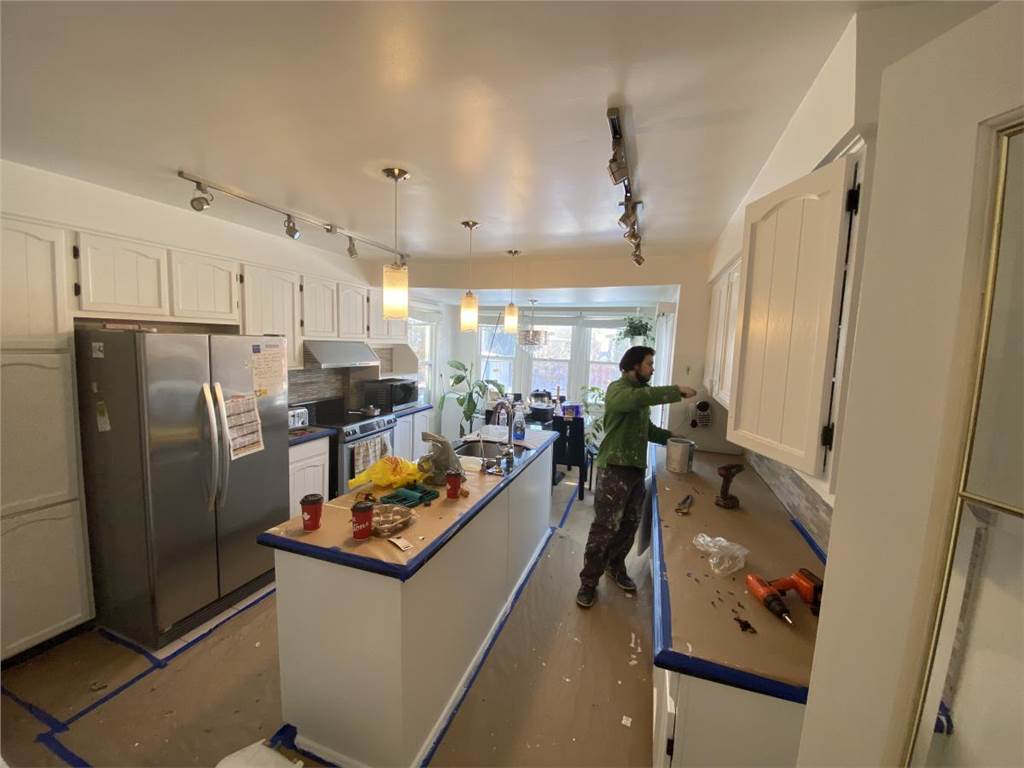
Coloring Tips For Your Kitchen
If you're thinking of painting your kitchen, there are a few things you need to know before you start. In this blog post, we'll give you some tips on how to choose the right color and what to do when preparing your kitchen for paint. So, if you're ready to give your kitchen a makeover, keep reading! We'll help you get started.
Before You Start Painting...
Before painting your kitchen, you should take the following steps:
1. Clean the walls - remove any dirt, dust or grease with a sponge or cloth. If the walls are very dirty, you may need to use a mild detergent.
2. Repair any cracks or holes in the walls with spackle or putty.
3. Prime the walls - this will help the paint to adhere better and will make the color more even.
4. Choose your paint color - consider both the overall look you want to achieve and how the color will affect the mood of the room.
5. Paint! Start by painting one small section at a time, using even strokes. Allow each coat of paint to dry
Choosing a Suitable Paint for Your Kitchen
Well, that depends on the type of surface you're painting. If you're painting a wood surface, you'll want to use a paint designed for wood surfaces. If you're painting a wall, you'll want to use a paint designed for walls.
There are a few factors to consider when painting kitchen surfaces, such as the type of wood and the desired finish. In general, it's best to use a semi-gloss or gloss paint to achieve a durable finish that is easy to clean. For painted wood cabinets, it's important to use a paint that is formulated for cabinets, as this type of paint will be more resistant to moisture and staining.
Paints differ in the amount and type of volatile organic compounds (VOCs) they emit into the air. Low- or no-VOC paints are becoming more common because of concerns about the health effects of VOCs, which can cause eye, nose, and throat irritation; headaches; and nausea.
So, it's a good idea to choose low- or no-VOC paint for your kitchen walls. You may also want to consider paints with added mildewcides, as kitchens are often high-humidity areas where mildew can form easily. Look for paints that are labeled "mold- and mildew-resistant."
Here Are Our Tips for Choosing a Paint for Your Kitchen:
Choosing a primer: There are a few different types of primers that can be used on kitchen surfaces, depending on the material of the surface and the desired finish. For example, if you're painting over an existing coat of paint, you'll need to use a primer that's compatible with the paint and works well on conjoining surfaces.
Using a Water-Resistant Paint: Water-resistant paint can help with painting a kitchen in several ways. First, it can help to protect the walls from moisture and humidity, which can cause peeling and chipping. Second, it can help to prevent the paint from blistering and bubbling when exposed to water. And third, it can help to make the cleanup process easier, since water-resistant paint is less likely to streak or drip than traditional latex paint.
Choosing Compatible Colors: Choosing colors that are compatible with each other can help create a cohesive and pleasing look in your kitchen. It is important to consider the overall color scheme of your kitchen when making your paint selection, as well as the individual colors of each element in the room. For example, if you have a white backsplash and cabinets, you may want to consider painting the walls a light blue or green to create a calming and refreshing space. On the other hand, if you have dark wood cabinetry, you might want to use brighter colors on the walls to make the space feel more lively.
Stick to a Concept: There are many benefits to sticking to a concept while painting your kitchen. For one, it can help you stay organized and on track. It can also help you create a cohesive look for your kitchen. By sticking to a specific color palette or design motif, you'll be able to achieve a unified look that is both stylish and functional. Finally, it can help you avoid making costly mistakes by ensuring that everything in your kitchen is planned out and intentional. So if you're looking to give your kitchen a fresh new look, consider sticking to a specific concept before starting the painting process.



